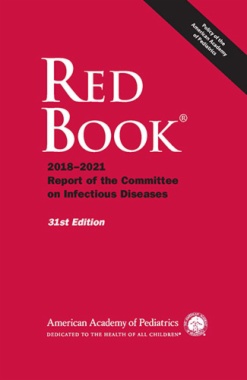Extending an 8-decade tradition of excellence, Red Book® provides the most reliable and clinically useful information on the manifestations, etiology, epidemiology, diagnosis and treatment of more than 200 childhood infectious diseases.
The 31st edition provides evidence-based guidance to practicing clinicians on pediatric infections and vaccinations based on the recommendations of the committee as well as the combined expertise of the CDC, the FDA, and hundreds physician contributors.
New in Red Book 2018:
All chapters were assessed for relevance given the dynamic environment in pediatric medicine today and every chapter has been modified since the last edition
- 3 new chapters added (Chikungunya, Coagulase-Negative Staphylococcal Infections, and Zika).
- Standardized approaches to disease prevention through immunizations, antimicrobial prophylaxis, and infection-control practices have been updated throughout
- Recommendations for the use of doxycycline have been liberalized.
- References to evidence-based policy recommendations have been recommended
- Appropriate chapters have been updated to be consistent with 2018 AAP and CDC vaccine recommendations, CDC recommendations for immunization of health care personnel, and drug recommendations from 2018 Nelson's Pediatric Antimicrobial Therapy.
Red Book® is an indispensable reference for pediatricians and pediatric infectious disease specialists and is useful for family medicine and emergency medicine physicians as well. Public health and school health professionals, medical residents, and students also will find it a high-yield source of pediatric infectious disease and vaccine information.

